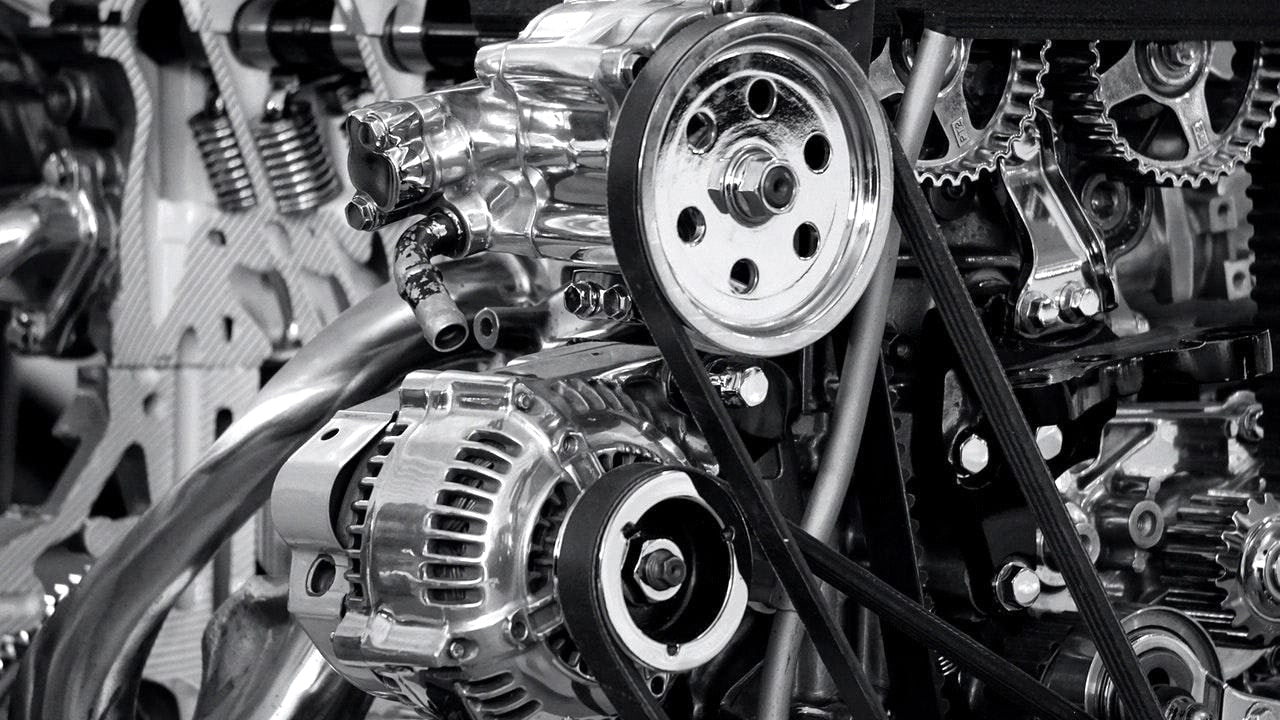What is Engine Assembly Lube?
Estimated reading time 9:30
Engine assembly lube is a crucial component in building or modifying an engine. If you’re new to engine building or interested in building an engine, you might wonder, “What is assembly lube?” Its primary function is to protect newly machined or replaced parts from wear at start-up. Without it, metal parts can rub against each other. This causes damage and reduces the engine’s lifespan.
Typically, they make engine assembly lube with a combination of base oil and tackifiers, or grease. This ensures it remains in place and provides long-lasting protection. Once the engine is running and oil pressure builds up, the lube dissolves in the motor oil. It leaves leaves little to no trace of its existence. By doing so, it allows the motor oil to take over its lubrication duties.
This article will explore the basics of engine assembly lube. We’ll look at its composition, purpose, and importance. We’ll also look at misconceptions and myths surrounding it. You’ll learn tips and tricks for proper application. Whether you’re a seasoned engine builder or a novice, you’ll gain valuable insight into this must-have product.

What Does Assembly Lube Do?
Here are some of the many critical tasks it must perform:
- Prevent Metal-to-Metal Contact – Helps prevent metal parts from coming into direct contact. This reduces risk of wear and damage during the initial start-up.
- Lubricate Moving Parts – Provides lubrication to moving parts, reducing friction and wear during the initial start-up. This allows smooth and efficient operation of engine parts.
- Provide Corrosion Protection – Helps prevent corrosion. It creates a barrier between metal surfaces and the environment. Thus, it preserves the integrity and longevity of mechanical parts.
- Keep Parts Clean – Helps keep mechanical parts clean and free of contaminants. Doing so reduces the risk of damage or failure caused by particles that can become lodged between moving parts.
- Reduce Break-In Time – Reduces the time required for parts to break in and operate smoothly. It improves overall efficiency and performance in mechanical systems.
The lube must also dissolve readily in motor oil to promote good oil flow. When you first start a new engine, the oil system is not yet fully pressurized. This means the oil may not be able to reach all parts of the engine immediately. That’s where assembly lube comes into play. It provides anextral layer of lubrication during this critical period.
If the lube does not dissolve readily, the motor oil won’t be able to flow evenly throughout the engine. It could cause damage or wear to parts that aren’t properly lubricated. Because it dissolves quickly in engine oil, assembly lube ensures the engine has plenty of lubrication from the start. It reduces the risk of damage while promoting a longer lifespan for the engine.
Product Myths & Misconceptions
There are several misconceptions and myths about engine assembly lube. You may (or may not) have heard some of them. These include:
- It’s unnecessary – Some think you don’t need it. They believe the engine will receive oil once it starts running. But, engine assembly lube is critical. You need it to protect engine parts during the initial start-up phase, which can cause the most wear and tear.
- You can just use any oil – Many people feel you can use any oil, such as motor oil or gear oil, in its place. That’s not true. They make assembly lube to effectively provide the proper protection and viscosity needed to lubricate engine components during start-up.
- It will harm the engine – There’s a belief that the lube can clog oil passages or leave a residue that will harm the engine. That’s not true. It’s designed to dissolve readily in motor oil and not damage the engine.
- You only need it once – You need to use it each time you disassemble and reassemble an engine. Also, use it during regular engine maintenance.
- It’s too expensive – On the contrary. It’s very affordable. Compare the price to the cost of repairing or replacing damaged engine parts. Engine lube is a worthwhile investment.
Choosing the Best Assembly Lube for Your Needs
When it comes to choosing the best engine assembly lube, it depends on your engine’s specific needs and the manufacturer’s recommendations. That being the case, there are several types on the market. Each has its unique properties and advantages. Let’s take a look at some of the most common types and also discuss assembly lube vs. grease:
- Petroleum-based: Made from petroleum base oils. Generally used for short-term protection during engine assembly. Petroleum-based lubes provide good protection during start-up. But, it can break down and lose effectiveness over time.
- Pros – Inexpensive, available everywhere, and provides good short-term protection during start-up.
- Cons – Breaks down over time. Can be messy and difficult to clean up. May not provide the same level of protection as other types of assembly lubes.
VP makes its Engine Assembly Lube from an extremely stout petroleum base oil. A stouter petroleum base oil stock can help prevent it from breaking down too quickly. A thicker base oil also provides a higher viscosity. This can help reduce the rate of oil evaporation and provide better film strength.
VP’s lube delivers excellent protection for your engine components during your assembly process and initial break-in period.
Also, a stout/thick petroleum base oil helps the lubrication remain in place on your engine components for a longer period. The result is better protection and performance.
- Synthetic: Made from high-quality synthetic oils. Provide better protection and longer-lasting performance than petroleum-based lubes. Synthetic formulas are also more resistant to heat and oxidation, and other factors that can break down traditional motor oil.
- Pros – Long-lasting protection & more resistance to heat and oxidation. Less messy + easier to clean up compared to petroleum-based assembly lubes.
- Cons – More expensive than petroleum-based assembly lubes. May not be available everywhere, and may not suit all engine types. It doesn’t have the same clingability as an engine lube made from a stout petroleum base oil.
- Engine Assembly Grease: We can already hear the question: "Can I use grease instead of assembly lube?" You can and there is a difference between the two. Grease-based lubes are thicker than other assembly lubes and provide excellent protection and adhesion. They’re ideal for components requiring long-term protection, such as bearings and camshafts.
- Pros – Excellent protection and adhesion. Long-term protection. Can be used on various engine components.
- Cons – More difficult to apply. Can clog oil passages if not properly used. May be more expensive than other assembly lubes.
When choosing one for your engine build, you must consider your engine’s specific needs and the type of protection you need. Consider your engine’s operating conditions, the parts you’re protecting, and your budget. Also, always consult the manufacturer’s recommendations. You can also seek professional advice before choosing the right lube for your needs.
How to Apply & How Much Engine Assembly Lube To Use
You need to apply it the right way and use the proper amount because it is vital to a good engine break-in. Here are some tips and tricks for using and applying it:
Use the recommended amount – Refer to the manufacturer’s instructions for the recommended amount to use. Different engines and components may need different amounts.
- Use the correct application technique – The recommended application technique depends. What type of lube are you using? What component are you lubricating. Most apply lube by brushing, spraying, or dabbing the product onto engine parts.
- Clean the components before applying – Clean them thoroughly before applying your engine lube. This ensures it adheres well and provides adequate protection. We recommend you use a solvent. Brake cleaner and carburetor cleaner are good choices. They’ll both do a good job removing any grease, oil, dirt, or other contaminants. Contaminants can interfere with the adhesion and performance of the lube. Be sure to thoroughly clean and dry the components before applying the lube.
- Apply to moving parts – Focus on applying the product to moving parts. This includes things like bearings, camshafts, and rocker arms. This provides the greatest protection during start-up.
- Reapply if necessary – If you leave the engine disassembled for an extended period, reapply the lube. This guarantees ensure it remains in place and provides adequate protection.
- Avoid over-applying – Over-applying the product can clog oil passages and impede oil flow. Be careful to use only the recommended amount.
Over-applying can also lead to other issues. This includes poor engine performance due to increasing friction and causing engine parts to stick. Over-applying can also cause engine damage. Too much lube can attract dirt and debris, and contaminate engine components.
Excess engine lube can make it difficult to start an engine because of increased engine friction. Friction increases the risk of wear and damage.
Thus, it’s vital to use the recommended amount. Follow the manufacturer’s specs, and you’ll know you’ll have the right protection. It will also prevent negative consequences.
What Engine Parts Need Lube?
Where do you apply engine lube? To any new or freshly machined engine parts that are prone to wear during the start-up phase of an engine. Some of the common parts you lubricate include:
- Bearings, including main and connecting rod bearings
- Camshaft and lifter faces
- Piston skirts and wrist pins
- Rocker arm and pushrod tips
- Timing chain and gears
- Valve stems and guides
- Cylinder walls and piston rings
During engine assembly, it’s important you apply the lube to all relevant parts. Doing so provides adequate protection. It also prevents damage from occurring during the initial start-up phase.

VP Engine Assembly Lube
Building an engine is no small feat – it’s a significant investment of time and effort and takes precision. Every step counts, and even the slightest misstep can be quite costly. That’s why you need a premium assembly lube that you can count on to help you get the job done right.
You want to protect your engine against scuffing, galling, and metal transfer during the critical break-in process. You need to be confident that your engine components get the pre-lube protection they need. This includes your cylinder walls, piston skirts, bearings, camshafts, cam lobes, lifters, wrist pins, and other valve train components. You want to know that your new or rebuilt engine will run smoothly for years to come. You need the best assembly lube for engine building.
That’s where VP’s engine lube comes in. We design it from a stout petroleum base stock. The thick stock provides greater cling ability than a synthetic base stock. It sticks on engine parts, which is what you want. Our relentlessly tacky formula includes zinc, phosphorus, and moly anti-wear additives. These additives deliver exceptional wear protection.
You’ll find VP engine lube dissolves fast in synthetic and conventional oil. You don’t need to worry about clogged oil ports. VP engine assembly lube is your best choice to ensure your engine build is successful.
Whether a seasoned pro or a newbie, you want the best for your engine and your time. VP Engine Assembly Lube gives you exactly that.
And don't forget about engine break-in oil, which is another key component to a successful build.

